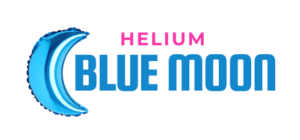Helium Plus: A Game Changer for Decentralized Infrastructure
The decentralized physical infrastructure network (DePIN) sector has faced a significant hurdle: achieving widespread adoption without incurring excessive hardware expenses or navigating complex technical requirements. The introduction of Helium Plus from the Helium Network aims to tackle this issue head-on. By removing the necessity for extra hardware and allowing participation through existing Wi-Fi routers, Helium Plus enhances accessibility to DePIN, accelerates network expansion, and boosts the functionality of its native token, HNT. This development signals a critical juncture in the advancement of decentralized infrastructure, with the potential to reshape the investment landscape of DePIN projects.
The Zero-Hardware Transformation
Traditional DePIN frameworks, exemplified by projects like Filecoin and Arweave, often mandate participants to invest in specialized hardware, such as storage devices or mining rigs, along with possessing a certain level of technical know-how to validate data or manage infrastructure. This creates a high threshold for entry, limiting engagement to a select group of early adopters or financially robust entities. Helium Plus revolutionizes this model by utilizing the existing Wi-Fi infrastructure. Participants can now monetize their unused bandwidth simply by registering and connecting their routers to the Helium Network. This hardware-free model brings several advantages:
- Lower initial costs: Businesses and public Wi-Fi providers can bypass the $300–$500 expense typically associated with traditional hotspots.
- Streamlined onboarding: The automated process eliminates the need for technical setup.
- Broader accessibility: Any venue with Wi-Fi, such as cafés, hotels, and offices, can quickly convert into a Helium access point.
The ramifications are significant; by the first quarter of 2025, the Helium Network had shifted 1,140.9 TB of offloaded data from U.S. carriers, marking a 138.6% increase from the previous quarter. With Helium Plus, this growth trajectory is expected to accelerate, tapping into a global pool of 2.3 billion Wi-Fi hotspots.
Token Utility and Economic Dynamics
At the core of Helium’s value proposition lies the HNT token. It has historically been utilized to purchase Data Credits (DCs) for subnetworks, stake for governance voting rights (through veHNT), and engage in a balanced burn-and-mint system that aligns token circulation with network activity. Helium Plus enhances these functionalities by:
- Boosting token demand: An increase in participants leads to a greater accumulation and expenditure of HNT on DCs, staking, and governance.
- Improving liquidity: Users can convert HNT into USD or other cryptocurrencies, creating a direct correlation to real-world value.
- Encouraging strategic deployment: The Proof-of-Coverage (PoC) model rewards users for positioning hotspots in underserved areas, promoting geographic diversity and bolstering network resilience.
The recent launch of $0–$30/month phone plans by Helium Mobile further integrates HNT into everyday transactions. Participants earn Cloud Points by sharing anonymized location data, which aids in optimizing hotspot placement and guiding network expansion. This cohesive ecosystem not only enhances HNT’s utility but also fosters long-term commitment from stakeholders.
Strategic Alliances and Industry Recognition
Helium’s collaborations with major telecommunications companies, such as AT&T and Telefónica’s Movistar in Mexico, highlight the project’s credibility within the industry. These partnerships leverage Helium’s community-oriented model to enhance connectivity in underserved regions, simultaneously reducing infrastructure expenses for partners while broadening the network’s reach. For investors, this shift indicates a changing perspective in the telecom sector regarding DePIN—a field that was once considered speculative is now being recognized as a legitimate infrastructure solution.
Investment Insights
The transformative potential of Helium Plus lies in its capacity to foster DePIN adoption while maintaining decentralization. By minimizing barriers to entry, the project taps into a vast reservoir of underused infrastructure, creating a self-reinforcing cycle: more participants lead to quicker network growth, which drives higher token demand and increases network value. For investors, this presents a persuasive argument. The HNT token’s role in governance (HIP-141) and its alignment with network usage through the burn-and-mint model position it as a sustainable store of value and utility. Recent data, including a 28.5% quarter-over-quarter surge in Helium Mobile accounts and the addition of 34,500 IoT hotspots by the first quarter of 2025, suggests that the network is already outpacing traditional DePIN models in terms of scalability.
Conclusion
Helium Plus represents more than just a technical advancement; it serves as a framework for the future of DePIN. By democratizing infrastructure participation and enhancing token utility, Helium is well-positioned to lead the sector into a new phase characterized by greater accessibility and scalability. For investors, the takeaway is evident: HNT provides an opportunity to engage with a project that is not only adapting to industry challenges but also redefining them. As the DePIN sector continues to mature, early adopters of Helium Plus are likely to reap the benefits from a network designed for both economic sustainability and strategic mass adoption. The time to seize this opportunity is now.

